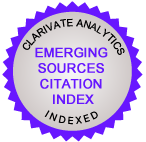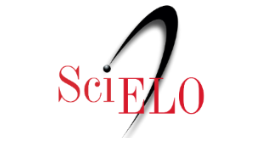Artificial intelligence and literary translation: reality and prospects
-
Hajar Benmakhlouf
 hajar.benmakhlouf@uic.ac.ma
hajar.benmakhlouf@uic.ac.ma
-
Driss Ouldehaj
 Oldlhjdriss@gmail.com
Oldlhjdriss@gmail.com
Downloads
DOI:
https://doi.org/10.56754/0718-4867.2025.3603Abstract
In the modern era, the integration of technology, especially artificial intelligence (AI), into various domains presents both opportunities and challenges. Notably, while AI has made strides in numerous fields, its influence on literary translation is particularly profound. Our research assesses AI’s strengths and limitations in comparison to vital human translation skills essential for top-tier literary translations. Through a focused comparative analysis of fragmented literary texts, our results highlight that, despite machine translation’s advancements and speed, it cannot fully replace human translators. Specifically in literary contexts, maintaining quality and accuracy remains a daunting task for AI-driven systems.
Palabras Clave
Ajdir, A. (2006). Maa Bouzfour: Attiflu fi Mahhabi Alfarasha (Primera edición, p. 119). Editorial Dar Abi Raqraq.
Bouzfour, A. (2009). Diwan Assindibad (2da Edición). Editorial Tarik.
____ (2010). La flautista azul – selección de cuentos traducidos al español por Hassan Boutaka y otros. Centro Cultural Mohammed Vi.
Coddou, M. (1973). La teoría del ser nacional argentino en sobre héroes y tumbas. En Giacoman, H. F., Homenaje a Ernest Sábato. Editorial Anaya.
Ibáñez, B. V. (2019). Los cuatro jinetes del apocalipsis. Editorial Alianza.
Luque-Nadal, L. (2009). Los culturemas: ¿unidades lingüísticas, ideológicas o culturales? Language Design, 11, 93-120. http://elies.rediris.es/language_design/ld11/ld11-05-lucia.pdf
Martínez, L. M. (2001). Análisis descriptivo de la traducción de los culturemas árabe-español. [Tesis Doctoral]. Universitat Autònoma de Barcelona.
Similar Articles
- Alejandro Grimson, Marta Rizo García, The affective-emotional dimension in communication theories: gaps and possibilities , Perspectivas de la Comunicación: Vol. 18 (2025): (Publishing on a rolling basis)
- Daniel Horacio Cabrera Altieri, Communication as contagion. Social imaginary, metaphor and communicology. , Perspectivas de la Comunicación: Vol. 16 No. 2 (2023): July - December
- María Leticia Flores Palacios, Compasión en las películas animadas infantiles. , Perspectivas de la Comunicación: Vol. 4 No. 2 (2011): Setiembre – Diciembre
- Victoria Isabela Corduneanu, Dra., Carlos Muñiz, Dr., Martín Echeverría, Dr., Emotions in electoral context and political attention to mass media: affective intelligence or cognitive evaluation? , Perspectivas de la Comunicación: Vol. 12 No. 2 (2019): July - December
- Tănase Tasențe, Mihaela Luminița Sandu, Cristina-Dana Popescu, From likes to change: assessing the impact of citizen engagement on the European Commission’s social media platforms , Perspectivas de la Comunicación: Vol. 17 (2024): January - December
- David Mateo, Conversation with James Lull , Perspectivas de la Comunicación: Vol. 16 No. 2 (2023): July - December
- Lucía Benítez Eyzaguirre, Educación emocional para la educación transcultural , Perspectivas de la Comunicación: Vol. 7 No. 1 (2014): Enero - Agosto
- Claudio Maldonado Rivera, Desterritorialización del cuerpo. El tatuaje y la episteme de lo subjetivo. , Perspectivas de la Comunicación: Vol. 3 No. 1 (2010): Enero - Agosto
- Francisco-Julián Martínez-Cano, Begoña Ivars-Nicolás, Alba-María Martínez-Sala, Dual ubiquity: basis for the effectiveness of VRCinema as a prosocial tool. Analysis of Hunger in L.A. and After Solitary. , Perspectivas de la Comunicación: Vol. 13 No. 1 (2020): January - June
- Yánder Castillo Salina, Viviana Muñiz Zúñiga, Alicia de la Caridad Martínez Tena, The agenda-setting theory. Epistemological criticism and qualitative deepening from anthropological study. , Perspectivas de la Comunicación: Vol. 14 No. 1 (2021): January - June
You may also start an advanced similarity search for this article.
Downloads
Published
How to Cite
Issue
Section
License
Copyright (c) 2025 Hajar BENMAKHLOUF, Driss OULDELHAJ

This work is licensed under a Creative Commons Attribution 4.0 International License.
- Proposed policy to offer Open Access Journals
Authors who publish with this journal agree to the following terms:
a) Authors retain copyright and grant the journal right of first publication with the work simultaneously licensed under a Creative Commons Attribution Attribution (CC -BY 4.0) ![]() that allows others to share the work with an acknowledgement of the work's authorship and initial publication in this journal.
that allows others to share the work with an acknowledgement of the work's authorship and initial publication in this journal.
b) Authors are able to adopt licensing agreements for the non-exclusive distribution of the journal's published version of the work (for example, to post it to an institutional repositories or publish it in a monograph), with an acknowledgement of its initial publication in this journal.
c) Authors are allowed and encouraged to post their work online (For example, in institutional repositories or on their website) prior to and during the submission process, as it can lead to productive exchanges and increase the citation of published work (See The Effect of Open Access).











